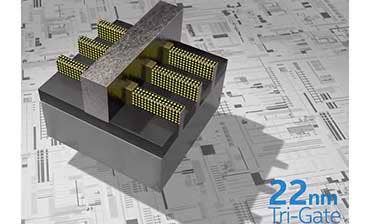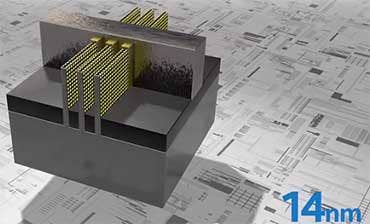Haswell vs. Broadwell: Is It Worth The Wait?

Intel this week gave the world an update on the status of Broadwell, the code name for its newest microarchitecture and the 14-nanometer process with which it's being made.
Intel's fifth-generation processors -- a.k.a. Core M -- ultimately will replace Haswell, the 22nm processors which themselves have significantly enhanced the the mobile-device experience with longer battery life and better graphics processing.
So how much better can Broadwell be? Apparently a good deal better.
Intel said in its Aug. 11 media briefing that early tests have shown a four-fold reduction in thermal design power (TDP), thereby reducing the need for heat disbursement by a factor of four. Such reductions make the chip suitable for tablets and other devices that don't require a fan. Broadwell parts will be about half the size of Haswell and enable board size to be reduced by about 25 percent.
In another of his now-famous "Honey I shrunk myself" videos, Intel senior fellow Mark Bohr of the Technology and Manufacturing Group and director of Process Architecture and Integration, explained how the company shrunk its die size by improving on the Tri-gate transistor technology it introduced in 2012.

To meet manufacturing challenges of the 14nm process, Bohr said that Intel focused mainly on improving the Tri-gate fin that gives the transistor a third dimension.
"We made them taller, thinner and spaced closer together," he said.
This, he said, provided three major benefits.
"First of all, this design is faster, allowing more processing and ultimately better performance," he said. "Second, it requires less active power, contributing to longer battery life. And third, the Tri-gate fins are so effective that we can get by with fewer of them, requiring even less area per transistor."
Broadwell processors all will incorporate what is now considered second-generation Tri-gate fin technology.
Intel's Core M product is currently in volume production and shipping to OEM customers as Broadwell-Y, a ball grid array-packaged one-core SoC with an Intel GT2 GPU intended for tablets, Ultrabook devices and other surface-mount applications. It's capable of addressing as much as 8GB of 1600 MHz LPDDR3 RAM and is available in 3.5- and 4.5-watt TDP varieties. Devices should be on shelves for this year's Christmas buying season.
Coming off the line later this year will be the more powerful Broadwell-U, a dual-core design for higher-end Ultrabooks and small form-factor desktops with a GT2 or GT3 GPU and capable of addressing 16GB of memory.
The more powerful Broadwell-H SoC, as well as parts for LGA 1150 and LGA 2011 socketed motherboards, are scheduled for 2015.
PUBLISHED AUG. 12, 2014